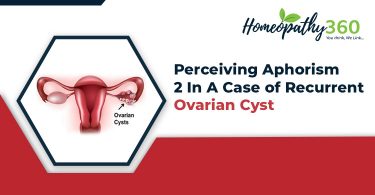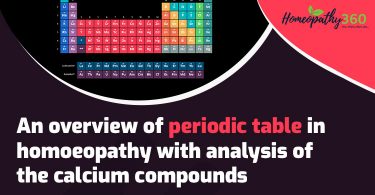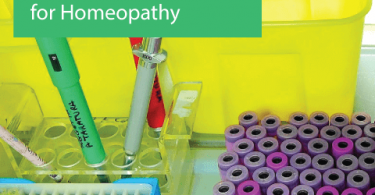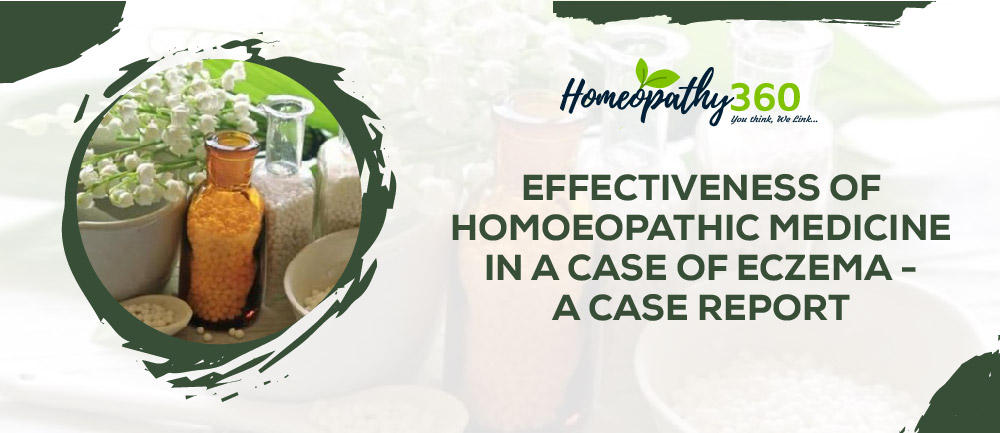
Abstract-Eczema is a common, chronic, non-infectious skin condition and is the most common form of dermatitis. It is also known as atopic dermatitis and is a relapsing, inflammatory skin disease. In this case report a 70-year-old male patient was diagnosed with eczema treated with homoeopathy.
Keywords – Eczema, homoeopathy, dermatitis
Abbreviations
immunoglobulin E (IgE), World Allergy Organization (WAO), outpatient department(OPD),aggravated by (<),ameliorated by (>).
Introduction –Eczema is a common, chronic, non-infectious skin condition and is the most common form of dermatitis. It is also known as atopic dermatitis and is a relapsing, inflammatory skin disease that primarily affects young children. Atopy is described as an inherited tendency that produce immunoglobulin E (IgE) antibodies in response to tiny amounts of common environmental proteins such as house dust mites, food allergens and pollens. The word dermatitis derives from the Greek “derma,” means skin, and “itis,” which means inflammation. Dermatitis and eczema are frequently used synonymously, however the term eczema is sometimes taken for the acute presentation of the disease (from Greek, ekzema, to boil over); here, no distinction is made.1 According to the World Allergy Organization (WAO) revised nomenclature in 2003, in the acute stage, eczematous lesions are characterised by poorly defined erythema with surface change (oedema, vesicles, and weeping). In the chronic stage, lesions are marked by skin thickening (lichenification). However, lesions can occur anywhere on the body, infants often have eczematous lesions on their cheeks and outer limbs before they develop eczema in the typical flexural areas such as behind the knees and in the folds of the elbow and neck. About 50% of people suffering from eczema also become sensitised to environmental allergens, such as house dust mite.2
Prevalence of atopic dermatitis is about 2-10% in adults and 15-30% in children. About 60% of cases will develop within the first year of life. Atopic dermatitis is a part of the triad known as the ‘Atopic march.’ This relates to the association between patients with atopic dermatitis, asthma, and allergic rhinitis. About 50% of patients with severe atopic dermatitis will develop asthma, and 75% will develop allergic rhinitis.3
Symptoms-
Symptoms of acute eczema includes
- Red and itchy skin
- Sometimes presents with blisters that easily break and weep (discharge liquid).
- The skin may become dry, cracked and thicken.
- Its structure may also change, making it rougher.
- The main symptom is itching, which can often become unbearable.
Eczema usually comes and goes in bouts or “flare-ups”: At times it will get worse (flare up) and at other times it will get better. It may also clear up completely for a short interval. The inflammation is only rarely constant.4
Causes-
In people with eczema, the corneal layer doesn’t provide enough protection because it is damaged by the inflammatory response occurring in the skin.
Another possible cause is a mutated gene that affects the production of the protein filaggrin, which the body needs to make the skin’s outer layer. The balance of fats in the skin changes, causing the skin to lose a lot of moisture, because filaggrinisn’t enough. The damaged skin also provides less protection from irritants, allergens (substances that can trigger allergies) and germs that might cause infections.
People who have eczema about 30-40% of them have an allergic type. They often have more severe skin problems, furthermore hay fever or allergic asthma. Their immune system reacts to allergens by releasing antibodies, which causes inflammation. Tests can detect these antibodies in the blood. Allergens that sometimes play a role in eczema include dust mites, pollen and foods such as milk, eggs, nuts or fish.
Environmental factors or other substances that are not allergens may also irritate the skin. Examples include rough fabrics in contact with the skin such as scratchy wool, cigarette smoke and extreme heat or cold.4
Complications
Patients are at increased risk for infection from bacterial, viral, and fungal pathogens due to the dysfunctional skin barrier seen in atopic dermatitis.5 About 10% of healthy individuals are colonized with staphylococcus aureus compared to over 90% of atopic dermatitis patients.6The density of staphylococcus aureus colonisation correlates with the severity of dermatitis.7 Infection with staphylococcus aureus may cause furuncles, impetigo or cellulitis. Patients with atopic dermatitis are also more susceptible to viral infections. Eczema herpeticum is a life-threatening infection caused by herpes simplex virus-1. Patients present with widespread blisters, fever, and fatigue. The blisters appear in clusters and can cover a large area of the body. Eczema herpeticum is a medical emergency with complications including keratoconjunctivitis, meningitis, encephalitis or secondary bacterial sepsis.8
Diagnosis
Several number of diseases present with skin rashes that resembles atopic dermatitis. However, careful evaluation of the morphology and localization of the rash combined with information about the individual patient usually leads to a diagnosis. Diseases that sometimes resemble atopic dermatitis are scabies, seborrheic dermatitis, and contact dermatitis.8
CASE REPORT
A 70-year-old male visited to the OPD on 21/1/2019 at Dr Girendra Pal Homoeopathic Hospital & Research Centre,(Collegiate Hospital of Dr. Madan Pratap Khunteta Homoeopathic Medical College, Hospital & Research Centre,) Homoeopathic University Saipura, Sanganer Jaipur, presented with skin eruptions on face and right hand since 6 month. Skin was dry, scaly and unhealthy. Itching and burning on eruptions <open air, scratching and washing, night >warm weather.
HISTORY OF PRESENTING COMPLAINTS
Patient was apparently well before 6 months back, gradually he started having complaint of skin eruptions on face and right hand.
Mental generals:
- Irritability
- anger violent
- Desire company
- Very forgetful
- Difficult thinking
Physical generals:
- Thermal reaction: sensitive to both heat and cold
- Craving: spicy food
- Thirst – decreased, 2 glass/day
Particulars:
- Location: face and right hand
- Sensation: eruptions since 6 months
Itching and burning
- Modalities: <open air, scratching and washing, night
>warm weather
Past history: –He had suffered from tuberculosis in the past roughly 15 years back, took allopathic treatment
Clinical findings:
Body image: Ectomorph; Consciousness: Conscious, well oriented about person, place, time
Height: 169 cm
Weight: 59 kg
Blood pressure- 118/76 mm of Hg
Temperature- Afebrile 97.4F (auxiliary)
Pulse- 76/minute
Respiration Rate-22/minute
Other general and systemic examination: Nothing specific
Local Examination: site-face and right hand
Character- red eruptions
Number- multiple
Itching- present
Burning /any other sensation- present
Discharges- absent
Analysis and evaluation of symptoms
| Symptoms | Intensity | |
| Mental generals | Anger violentVery forgetfulIrritabilityDesire companyDifficult thinking |
(+3)
(+2) (+2) (+1) (+1) |
| Physical generals | Thermal reaction: sensitive to both heat and coldCraving for spicy foodThirst decreased | (+1) (+3) (+1) |
| Particulars | Eruptions onface and right handItching on eruptionsburning on eruptions<open air<scratching<washing<night>warm weather[Y1] | (+3) (+3) (+3) (+1) (+3) (+1) (+3) (+1) |
| Uncommon | Nothing specific found in patient | – |
| Common | dry, scaly and unhealthy skin | – |
MIASMATIC ANALYSIS OF SYMPTOMS9,10,11,12
| S.NO. | SYMPTOMS | PSORA | SYCOSIS | SYPHILIS | LATENT PSORA |
| 1 | Anger irascibility – violent. | 12 | 4 | e | 4 |
| 2 | Forgetful | 2 | 34 | E | |
| 3 | Irritability | 12e | 234 | ||
| 4 | Desires pungent things | ||||
| 5 | Eruptions on face – itching – night agg. | 129 | |||
| 6 | Eruption on face – burning –scratched | 19 | |||
| 7 | Eruption on hand | 12 | |||
| 8 | Eruption on hand – itching | 12 |
Predominant miasm: Psora
Totality of symptoms:
- Anger violent
- Very forgetful
- Irritability
- Desire for spicy food
- Eruptions on face – itching < night
- Eruption on face – burning when scratched
- Eruption on hand
- Eruption on hand – itching
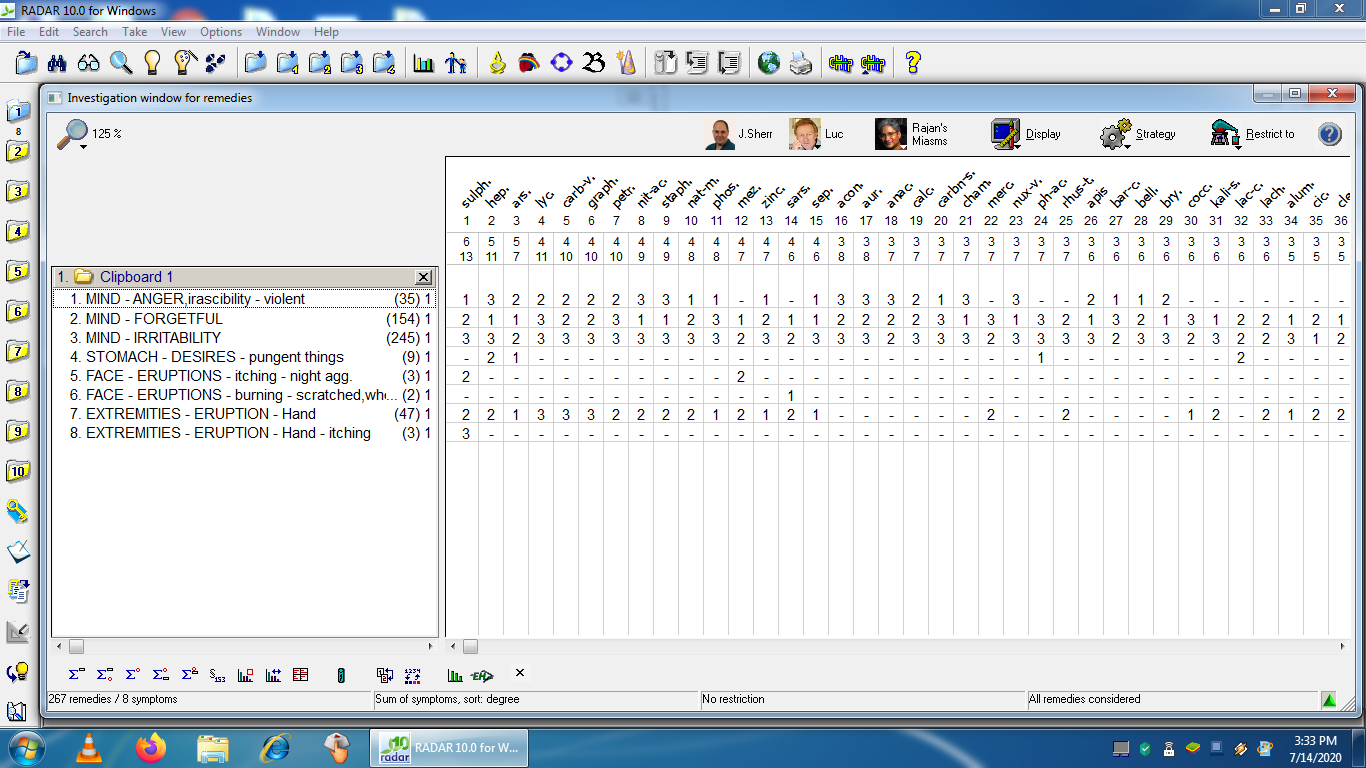
Fig 1: Figure showing Repertorisation (repertory sheet) of case from Kent’s Repertory using RADAR software13
Selection of remedy and its potency with justification14,15,16,17–
Sulphur was selected as first prescription because First of all it covers maximum marks with maximum rubrics after repertorisation. After comparison of symptoms from various books of materia medica, sulphur appears to be most similar remedy to the totality of symptoms of the patient.General constitutional and mental picture of the patient is also similar to sulphur as described in different material medica in miasmatic prescribing sulphur covers psoric (+++) and sycotic (++) miasms. so, on the basis of totality and miasm ,sulphur was selected . 30C potency was selected and prescribed in this case as per Hahnemann’s guidelines.
First prescription – Sulphur 30/1dose and Phytum 30 thrice a day for 7 days.
Table 1: Follow ups of the case
| Date | Symptomatology | Prescription | Justification |
| 28/1/19 | Itching and burning in skin eruptions-better | Placebo 30/tds for 7day | As there was improvement |
| 4/2/19 | Itching and burning in skin eruptions-aggravated(reappear) | Sulphur 30 /1 dose, stat Placebo 30/TDS for 12 days | Repetition of medicine because Symptoms were aggravated[Y2] (reappear)14,18 |
| 21/2/19 | Itching and burning in skin eruptions-better | Placebo 30 / TDS for 10 days | As there was marked improvement |
| 1/3/19 | Itching and burning in skin eruptions-better | Placebo 30 / TDS for 10 days | As there was marked improvement |
| 9/3/19 | Itching and burning in skin eruptions-better | Placebo 30 / TDS for 10 days | As there was marked improvement |
| 25/3/19 | Itching and burning in skin eruptions-better | Placebo 30 / TDS for 10 days | As there was marked improvement |
| 4/4/19 | Itching and burning in skin eruptions-better | Placebo 30 / TDS for 10 days | As there was marked improvement |
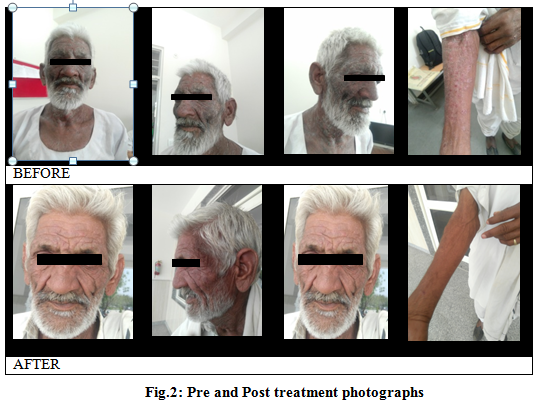
DISCUSSION AND CONCLUSION: Case was treated with Sulphur 30c, prescribed on basis of reportorial totality. Pre and Post treatment photographs were assessed, which showed significant improvement in post treatment photographs along with relief of symptoms.
REFERENCES
1.Thomsen S. Atopic Dermatitis: Natural History, Diagnosis, and Treatment. ISRN Allergy 2014:1-7.
2.Schmitt J, J Apfelbacher C, Flohr C. Determinants of eczema:Population-based cross-sectional study in Germany. Allergy 2011;66(2):206-213.
3.Eichenfield LF, Tom WL, Chamlin SL, Feldman SR, Hanifin JM, Simpson EL, et.al. Guidelines of care for the management of atopic dermatitis: section 1. Diagnosis and assessment of atopic dermatitis. J. Am. Acad. Dermatol. 2014 Feb;70(2):338-51.s
4. Deckert S, Kopkow C, Schmitt J. Nonallergic comorbidities of atopic eczema: an overview of systematic reviews. Allergy. 2013;69(1):37-45.
5.Ong PY, Leung DY. The infectious aspects of atopic dermatitis. Immunol Allergy Clin North Am. 2010 Aug;30(3):309-21.
6.Gong JQ, Lin L, Lin T, Hao F, Zeng FQ, Bi ZG,et al. Skin colonization by Staphylococcus aureus in patients with eczema and atopic dermatitis and relevant combined topical therapy: a double-blind multicentre randomized controlled trial. Br. J. Dermatol. 2006 Oct;155(4):680-7.
7.Wetzel S, Wollenberg A. Eczema herpeticatum. Hautarzt. 2004 Jul;55(7):646-52.
8. Nemeth V, Evans J.Eczema.statpearls, Treasure island [Internet];2020.
9.Patel RP. Chronic miasms in homoeopathy & their cure with classification of their rubrics/ symptoms in Dr. kent’s repertory (Repertory of miasms).kottayam, kerala: Hahnemann homoeopathic Pharmacy; 1996.
10.Allen JH. The Chronic Miasms: Psora and Pseudopsora, Vol. I&II Reprint ed new Delhi: B Jain Publishers Pvt. Ltd; 2006.
11. Benerjee SK. Miasmatic Prescribing. 2nd extended ed. New Delhi: B Jain PublishersPvt.Ltd; 2011.
12. Robert HA. The principles and art of cure by Homoeopathy. 3rd reprint ed. New : B Jain Publishers Pvt.Ltd; 2007.
13. RADAR [computer program]. Version 10.0. London: Archibel Homeopathic software.
14.Hahnemann S. the Chronic diseases their peculiar Nature and Their Homoeopathic cure.Low Price Edition. New Delhi: B. Jain Pulishers Pvt. Ltd.; 2002.
15.Boericke W. Pocket Manual of Homoeopathic Materia Medica and Repertory. 9th Edition. New Delhi: B. Jain Publishers (P) Ltd; 2009.
16.Clarke JH. A Dictionary of Practical Materia Medica. New Delhi: B. Jain Publishers; 1999.
17. Allen HC.keynotes rearranged and classified with leading remedies of materia medica and bowel nosodes.New Delhi: B.Jain Publishers;2006.
18.Kent JT.Lectures on Homoeopathic Philosophy. reprint ed. New Delhi : B. Jain publishers Pvt Ltd; 2001.
About the authors
Dr Ruchi singh MD (Associate professor, Department of Organon of Medicine,Dr. MPK Homoeopathic Medical College Hospital & Research Centre (Under Homoeopathy University), Saipura, Sanganer, Jaipur, Rajasthan, India.)
Dr Anjana kumari MD Part I (PGR, Department of Organon of Medicine, Dr. MPK Homoeopathic Medical College Hospital & Research Centre (Under Homoeopathy University), Saipura, Sanganer, Jaipur, Rajasthan, India.)
Dr Rajshree Jangid MD Part II(PGR, Department of Organon of Medicine, Dr. MPK Homoeopathic Medical College Hospital & Research Centre (Under Homoeopathy University), Saipura, Sanganer, Jaipur, Rajasthan, India.)



